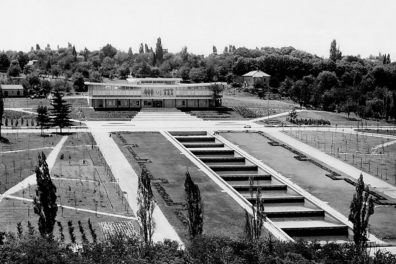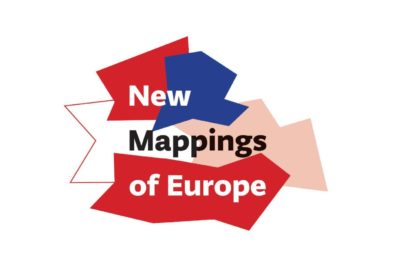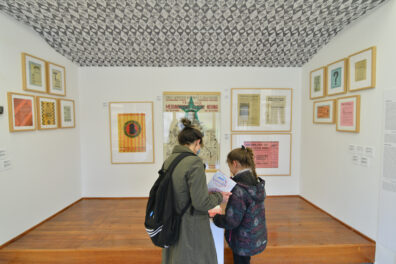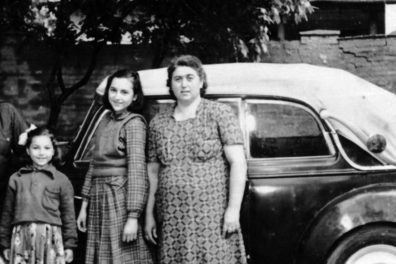
“The storeroom opens”project within the context of Yugoslav heritage deliberation
The work on the concept, systematization and (re)interpretation of the collections is the part of an active process of self-reflection on the institution of a museum. The lack of general consensus on the heritage of Yugoslavia and relatively short historical distance also affected the ways in which the collections of the Museum have been perceived. In fact, heritage is not limited to objects, compendiums and collections of a museum, but it also includes a network of cultural institutions, sites, and environment, closer and wider community. Besides, it is constantly being created and changed, depending on positions from which it is interpreted, and contexts in which it is contemplated upon. The project The Storeroom Opens is in correlation with conclusions of the working group for systematization for the Museum of Yugoslavia collections. They strive to establish a fluid-modular participatory concept, based on reflexive, integrative and dynamic approach to heritage.
Prior initiatives to the project The Storeroom Opens can be mapped through a number of attempts to revalue and critically interpret the museum content, as a material evidence of the political and social history of the area. The first projects with problem solving approach appeared in 2000, whereas for more than a decade there were sporadic attempts characterized by the efforts to interweave two quite heterogeneous, but clearly symbolically delineated collections – of the Memorial Center “Josip Broz Tito” and of the Museum of the Revolution of Yugoslav Nations and Ethnic Minorities – in such a way to adequately present the state and society. These attempts, marked by disagreements not only in terms of what might be called the Yugoslav heritage, but also by different understanding of the concept of heritage in general, have repeatedly problematized the very premise of the need for their complete integration.
The current process of collection systematization and development of the Museum of Yugoslavia concept was launched in 2015, based on theoretical position of contemporary museology and heritology. The most important innovation in the new systematization is that collections of the two directly inherited institutions are being perceived as two large artifacts. The juxtaposition of institutions of the Memorial Center “Josip Broz Tito” and the Museum of the Revolution of Yugoslav Nations and Ethnic Minorities, the collections of which were created in a similar time but in completely different ways, allowed a more direct interpretation of the ideas behind their creation. At the same time, they represent the basic resources for further work and dynamic approach to defining and shaping of the Yugoslav cultural heritage.
These two collections that were merged into one in 1996 – in the scope of then established Museum of Yugoslav History – differ in many ways. On the one hand, historical-documentary direction of the Museum of the Revolution, its precisely elaborated methodology of chronological and thematic processing of items, have formed a systematical unit with clear policies of further collecting. On the other hand, the fund of the Memorial Center “Josip Broz Tito” – which incorporated the collection of the previous institution on the same site, the May 25 Museum, as well as the collection of the much smaller Museum “4th of July” – had a lack of unified documentation on museum objects, and there was an objective impracticability of planning further acquisitions. In a particular contrast to methodology of the Museum of the Revolution there was a “spontaneous” formation of the contour of the biggest part of the collection due to the absence of specific criteria other than presents to the president of the country. The only part of the collection of gifts for which Tito had a say in creating, was the Yugoslav Fine Arts and a part of the library.
The Museum of the Revolution of Yugoslav Nations and Ethnic Minorities, seen as a whole, is a complex and unique artifact with significant interpretative potential. It testifies about the ways in which, at a time when the Museum was created and opened, one of the politically most important state museums was planned. Also, from the very concept of the Museum and the structure of its collections it can be seen how the revolution and the creation of a new state were perceived and documented, but we also get some hints on legitimizing the state apparatus through museum practice, and educational practice related to it. Certain transformations that followed after 1990 were of small-scale and influence, and they testify about disintegration of the entire socio-political system and general confusion of the time, more than they represent a serious consideration of Yugoslav heritage musealisation.
Unlike the museums of revolution in other republics that after the end of Yugoslavia turned into museums of contemporary history (the National Museum of Contemporary History in Slovenia, the Museum of Vojvodina, the Croatian History Museum…), the Museum of the Revolution of Yugoslav Nations and Ethnic Minorities, by coincidence, remained as a whole within the Museum of Yugoslav History. Hence, we got a chance to treat it as comprehensive product of Yugoslav socio-political system. Since the fund of the Memorial Center “Josip Broz Tito” was also conceptually delineated, these two symbolic units, as key resources, gave us the freedom to continue to dynamically define the Museum concept and development.
Historical-memorial fund of Josip Broz Tito1 is the most diverse by content and the largest by the number of items in the fund of the Museum of Yugoslavia. It had been slowly developing from 1944 to 1980.2 and it can be grouped into three categories according to the origin and primary characteristics of the items: 1. Gifts; 2. Josip Broz Tito as a statesman; and 3. Memorials. The Library of Josip Broz is a special unit due to the formal-legal status it has as a cultural heritage of great importance. Thus based division is museologically established and functional, but it should be understood with regard to overlapping contents between some units.
Gifts are the most numerous and most characteristic part of the fund of Josip Broz Tito and, unlike rather standard content of the collections that testify of Tito’s political and state activities and everyday life, the corpus of presents has the character of the museum as an image of the world. The reason for extreme heterogeneity of this unit lies in variety of people who were offering the gifts. It encapsulates objects of a significant material and cultural-historical value as well as those that can be classified as ephemeral, trivial in the artistic sense, or materially worthless, but are, as a modern museological practice shows, important witnesses of different times and cultures. While Tito is the common denominator of all items, he was nonetheless made passive in the process of exchange because the perspective is turned away from him and directed towards the gift as the representative of a gifter. So it can be said that this continuous accumulation created a cabinet of curiosities of Yugoslavia.
Basic ideas and guidelines for the development of the concept of the Museum of Yugoslavia
The work group in charge for the systematization of collections has suggested further development of the Museum concept along with preparations of the permanent display in all its phases, taking into account, as well as questioning the obtained results.
The concept of the MY and the work on future collecting of the material should be based on:
- Clearly defined theoretical and conceptual position;
- Avoiding the pitfalls of the standard musealisation process – a tendency of forming a total “image of the world”
- Understanding of heritage as a process that constantly reinvents itself;
- Appreciation of positive experiences gained within the twenty years of the MYH duration;
- Cooperation with individuals and institutions engaged in science, politics and cultural heritage, work on joint projects and exchange of experiences;
- Inclusion of a wider public through a variety of animation, discussion programs and other forms of participation.
Such understanding leads us towards an integrative perception of (Yugoslav) heritage rather than locking us up within the framework of the existing collections and within the dominant particular approach to heritage.
Changing the name to the Museum of Yugoslavia is an effort to focus the scope of research on a range of different phenomena that mark Yugoslav heritage and Yugoslav experience, being recognized in current research and museum practice. Research areas are still concentrated on the Kingdom of Serbs, Croats and Slovenes, the Kingdom of Yugoslavia and socialist Yugoslavia, as national frameworks of all Yugoslav nations in the “short 20th century”, when, among other things, the formation of Yugoslav identity was attempted in different ways. The attention is now focused on the development of the Yugoslav idea since its first manifestations during the mid-19th century until the state embodiment in 1918, as well as on the social, cultural and identity forms that persist even after the political disappearance of Yugoslavia.
The Museum is oriented towards mapping specific and/or authentic phenomena that have been generated along with duration of the Yugoslav state. The focus is shifted from the normative framework to the phenomena it gave birth to, such as transformations of practices in culture and introduction of new ones (while culture is understood in wider anthropological sense, as a sum of human social action and creativity). Combinations of old practices with new ones have outlined the Yugoslav experience, keeping some characteristics of local and regional context. These changes that arise from the normative framework – the state – bordered with defined coordinates of time and space and with specific socio-historical circumstances are largely reflected in the museum fund.
1 The degree to which an item is documented and the collection researched varied significantly among collections and units acquired from different establishments. Taking into account reports from previous collections reviews, former suggestions on collections systematization, the direct experience of working with museum objects, consultations with colleagues, all led us towards embracing a more conventional division according to the type of museum items.
2 Although the year of Tito’s death is considered as the year of closing the collection, there are some items that were sent to Museum later, in his memory. These posthumous gifts are grouped into a collection of a symbolic name “May 4”, according to the date of Tito’s death.

The Origins: The Background for Understanding the Museum of Yugoslavia
Creation of a European type of museum was affected by a number of practices and concepts of collecting, storing and usage of items.

New Mappings of Europe

Museum Laboratory
Starting from the Museum collection as the main source for researching social phenomena and historical moments important for understanding the experience of life in Yugoslavia, the exhibition examines the Yugoslav heritage and the institution of the Museum

